Rousham, Oxfordshire: A garden that 'may be the most atmospheric, the most beautiful and the most intellectual in the country'
Timothy Mowl celebrates what may be the most atmospheric, the most beautiful and the most intellectual garden in the country, Rousham in Oxfordshire.
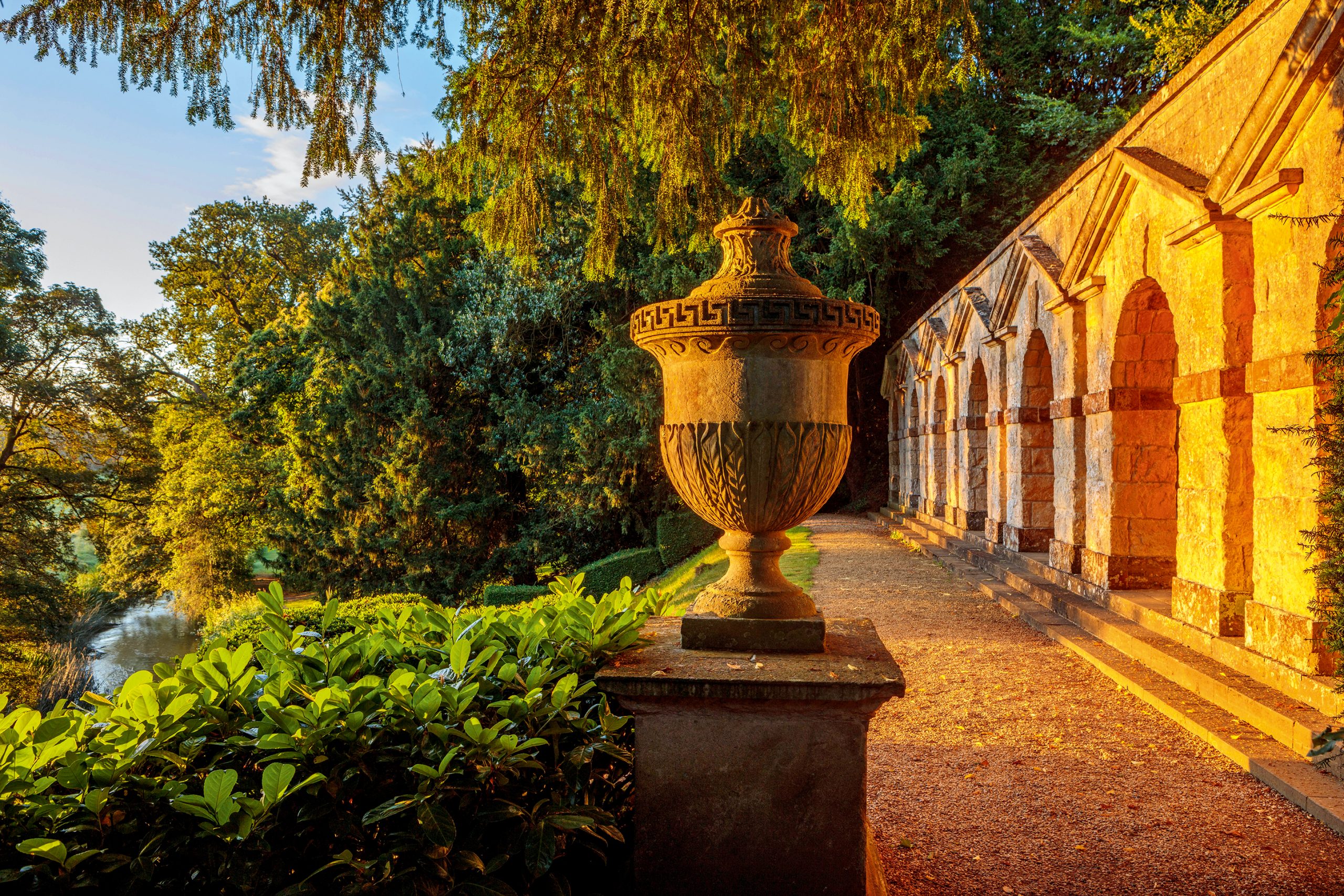

Rare if not unique, in houses and gardens open to the public, Rousham proudly presents itself as ‘completely unspoilt and uncommercialised — no tea room and no shop — just glorious gardens to explore at your leisure’.
How many other venues encourage you to ‘bring a picnic and comfortable shoes and it is yours for the day’?
Rousham, perhaps the most beautiful, the most intellectual and certainly the most atmospheric garden in this country, remains resolutely individual. An honesty ticket machine under the stables, rather than an entrance kiosk, reinforces its relaxed approach.
It is as if the visitor is here to enjoy a private tour of a private estate, with the prospect of seeing the owners, Charles and Angela Cottrell-Dormer, working away in the flower borders. Scurrying about in welcome on the front lawn are feathery-booted mille fleur barbu d’uccle bantams and, on the other side of the ha-ha skirting the house, ferociously primeval long-horned cattle can be glimpsed grazing in the paddock, as they have done since the early 18th century.
Doubling as Alconleigh in the BBC’s adaptation of Nancy Mitford’s The Pursuit of Love, Rousham’s somewhat stolid Caroline house with its fret of battlements gives only the merest hint of what is to be found in the gardens behind.
There are clues as to William Kent’s involvement here in the 1740s — he designed the grandly Roman stable block — in the jaunty, ogee-shaped cupola on the house and the octagonal glazing of the parlour window to the right. Kent redesigned the room, painting for it a canvas ceiling of Raphaelesque wreaths and scrolls with medallion landscapes and a nymph and satyr.
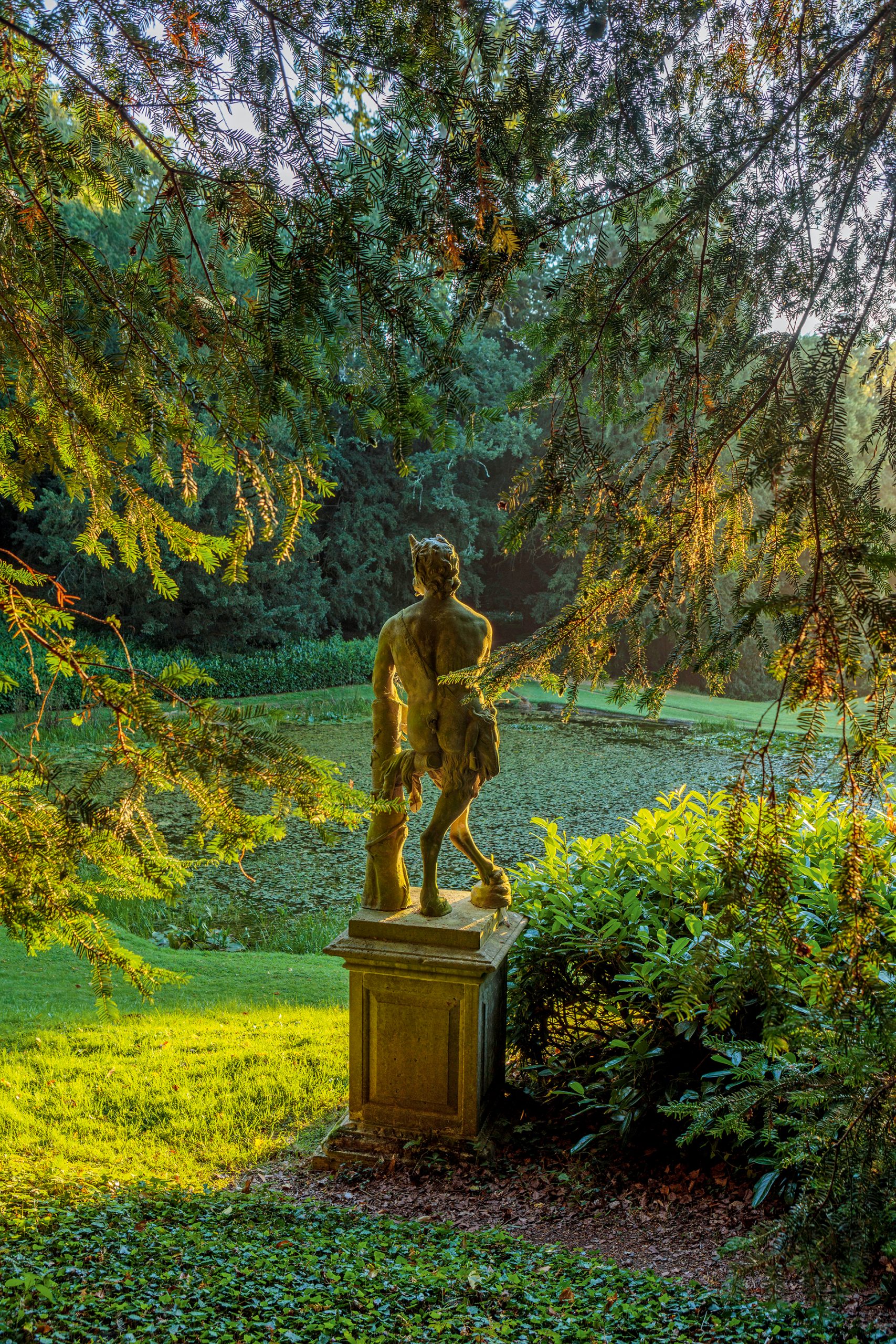
The centrepiece is an oval of Ceres and Bacchus sprawling uncomfortably in support of Venus and Cupid — Corn and Wine sustaining Beauty and Love. The ceiling is a prefiguring of the themes of plentiful Nature, of love, of the paired qualities of virtue and vice and the moral challenges that suffuse the grounds.
Sign up for the Country Life Newsletter
Exquisite houses, the beauty of Nature, and how to get the most from your life, straight to your inbox.
As with so many of his landscapes, Kent came to Rousham to naturalise and soften the angular contours of an existing Charles Bridgeman layout, to loosen the geometry by opening up glades and bringing the surrounding countryside into the design; as Horace Walpole put it, ‘Kent leaped the fence, and saw that all nature was a garden’.
He was working for an old soldier, Lt Gen James Dormer, who had enjoyed a gallant military career campaigning in Spain. Dormer was also a Merton College man, well read in the classics and an avid collector of gently erotic paintings and bronzes.
Kent reported in 1738 that the bachelor general was ‘bronzo mad’ and there are several of his sculptures displayed on Kent-style wall brackets in the parlour. Dormer owned at least three bronzes of Antinous and this fascination with the Emperor Hadrian’s male lover, who drowned in the Nile, is one of the keys to an understanding of the gardens. The Kent design pivots on an imposing statue of the golden boy, which gazes out across the River Cherwell at the head of the Long Walk.
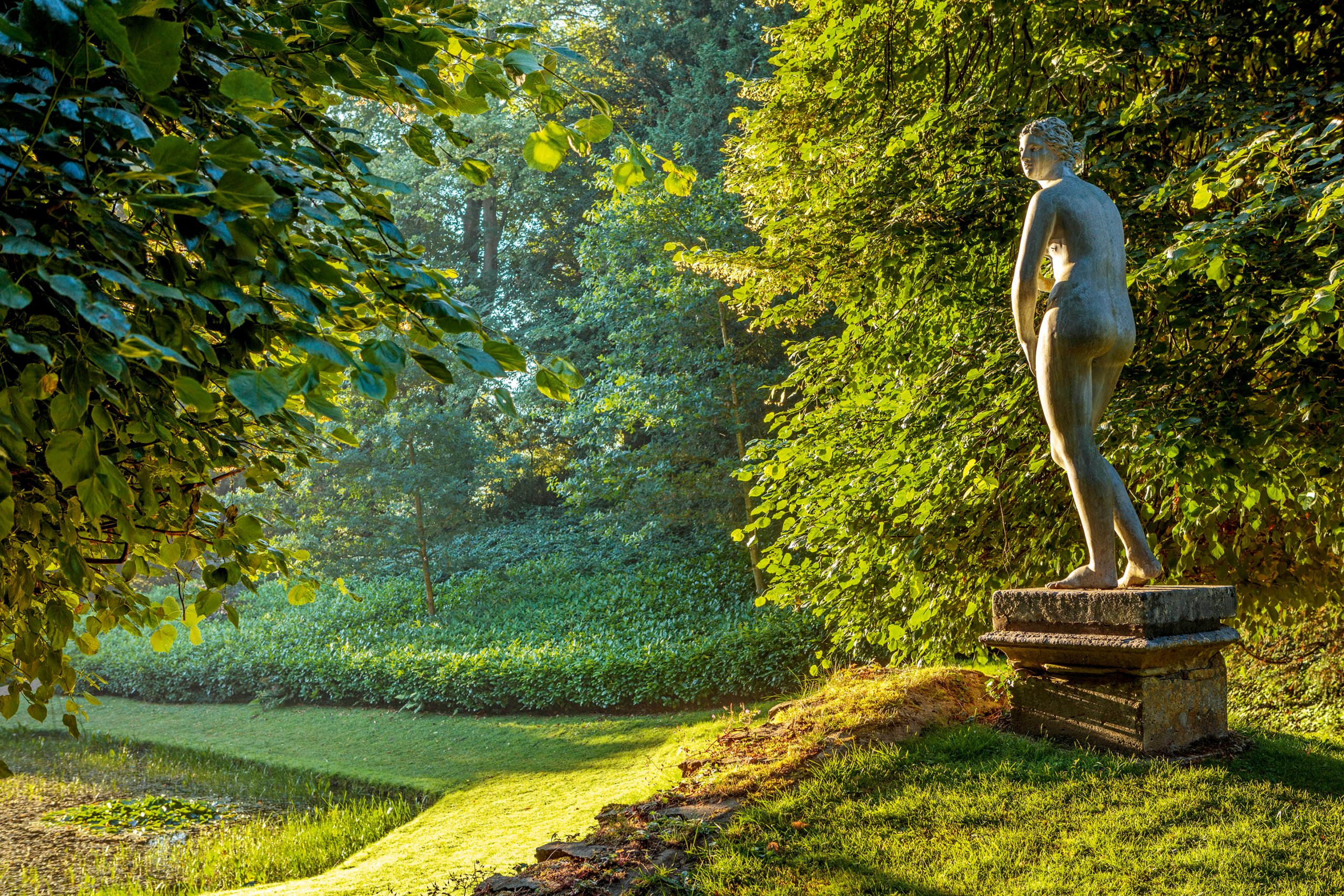
In 1725, Bridgeman had left a characteristically jagged and dramatic garden shape on the ridge overlooking the river, all sharp angles and straight lines, to create sudden, direct vistas. The water basins of what would later become Venus’s Vale were in place, but were exactly square.
At the end of the central avenue was a Classical temple, which Kent replaced with the statue of the naked Antinous, as well as contriving Townesend’s Temple to be sited out of sight around a corner of woodland to produce a surprise effect. Bridgeman had riddled his woods with winding paths leading to geometrically shaped clearings, one with a Cold Bath. Kent’s transformation of this rigidity was primarily architectural.
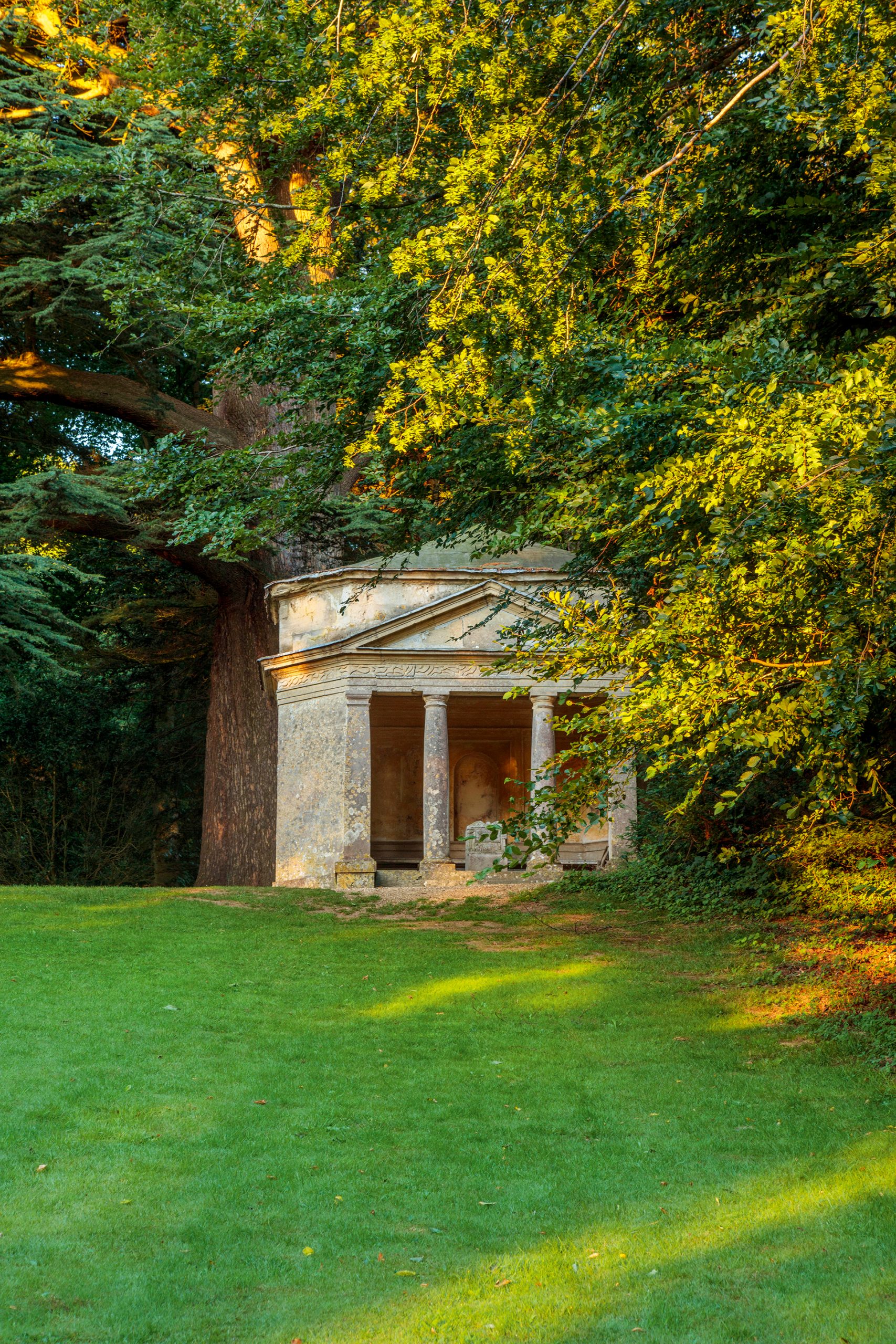
His temple offered views westwards to Heyford Bridge over the river, as his Praeneste arcade, taking its name from Palestrina in the Roman campagna, gave seven framed pictures of the Oxfordshire countryside.
The poetry of Kent’s late 1730s alterations is most evident in Venus’s Vale, the heart of the garden, where he retained Bridgeman’s basins, but linked them with sloping lawns, dramatised by statuary, which now controlled the garden.
The General, dying in London, directed the reshaping in letters to his steward William White who, together with the gardener, John MacClary, was carrying out the General’s and Kent’s design intentions; the letters are full of ‘bustos’.
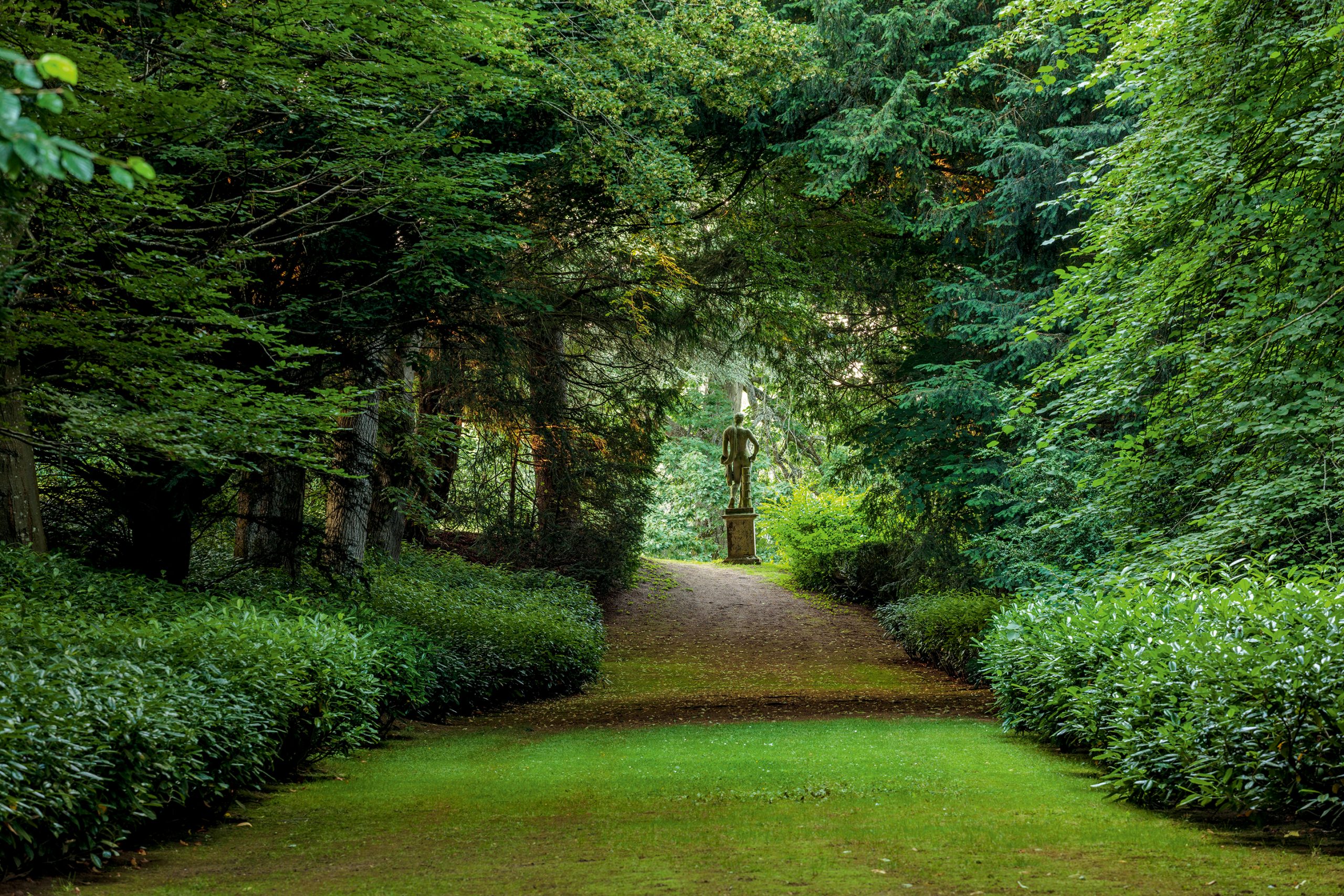
Dormer’s intended iconography has been broken by the losses of time, but it can be partly retrieved with the help of a later letter from MacClary to Dormer’s heir, Sir Clement Cottrell-Dormer, which gives a descriptive tour of the gardens as they were in 1750.
A modern visitor taking this circuit begins at the garden front of the house, where two distinct views open up, one like a Netherlandish landscape, with cattle in the foreground and the Castellated Barn in the distance, the other sweeping over the Bowling Green to Scheemakers’s violent sculpture A Lion attacking a Horse on the terrace — tamed and untamed Nature — with Kent’s Gothicised Temple of the Mill and the notionally Classical Triumphal Arch in the fields further out.
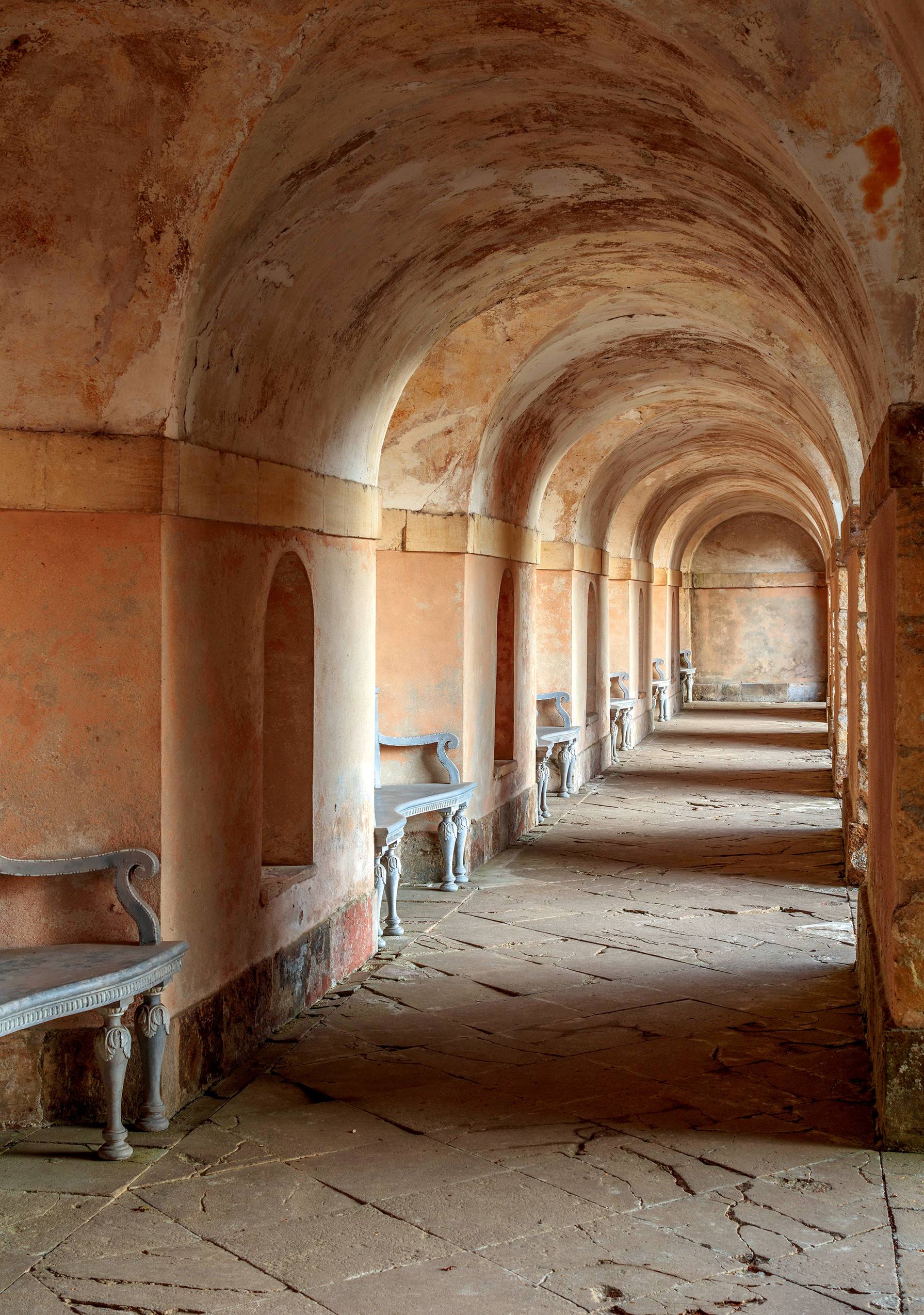
At each point, sculpture or seats, or both, frame the consciously planned views, as on the Bowling Green terrace, where Classical terms — Bellona and Minerva — which look inwards, are placed alongside Gothick-latticed arbours facing each other.
Always there is this sense that the visitor is being directed, with open glades morphing into dark shades, notably along the path by Bridgeman’s ha-ha, the crepuscular canopy of which was originally formed by yews and black cherries underplanted with holly and laurel.
From the darkness, we reach the glade where the Dying Gladiator — surely a prescient memento mori for the General himself — languishes on his plinth, and where Arcadian terms — Hercules and Pan — urge moral choices as they gaze out to the landscape. The bottom frame here is a balustrade that will be encountered later in the tour, for this is the roof of Kent’s Praeneste arcade.
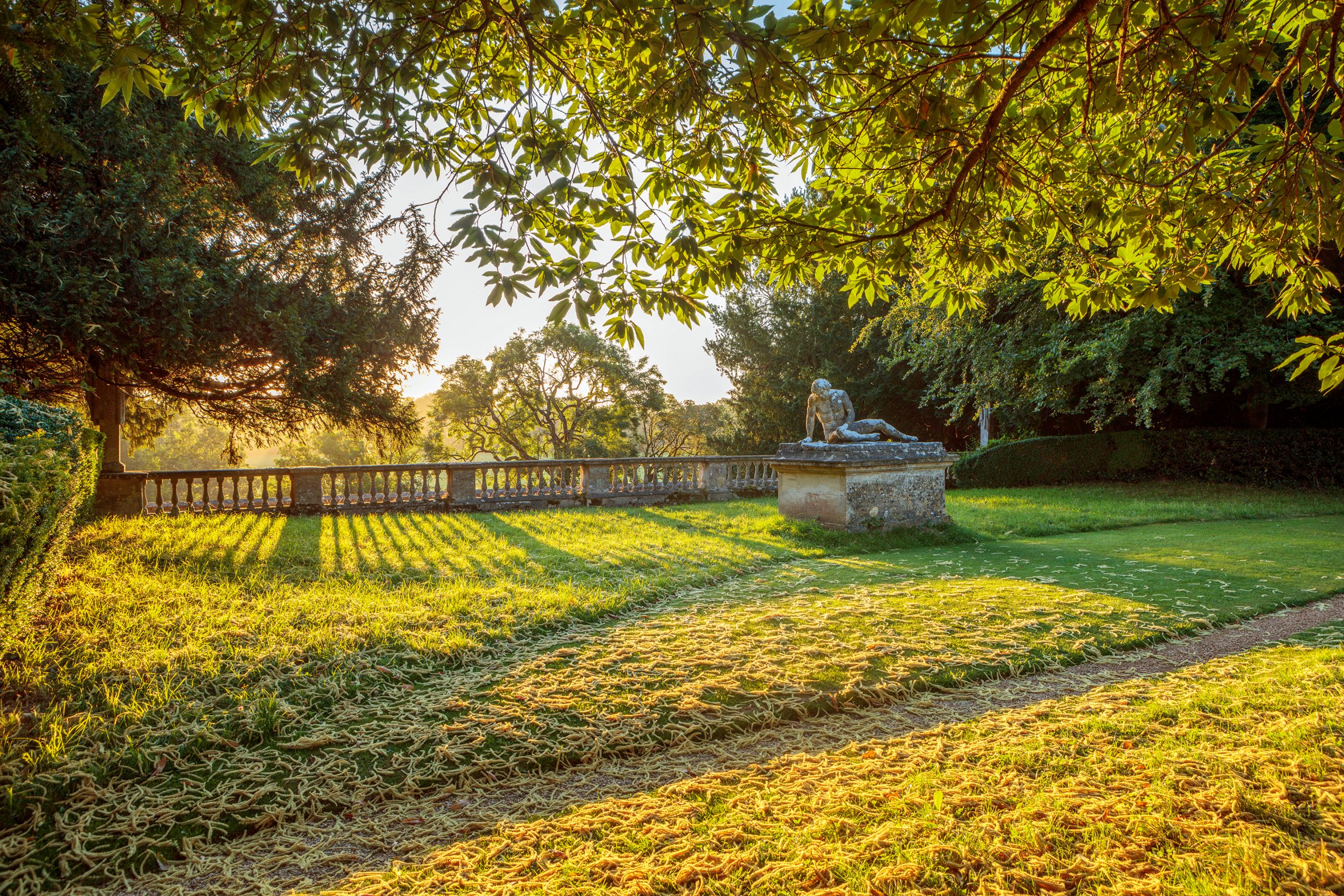
That balustrade signals the essence of the Kentian garden experience at Rousham. At no point can the gardens be seen in their entirety, as in a formal layout that can be taken in at a glance; Kent’s designs are brilliantly interactive.
A visitor must move through them, coming suddenly across surprise statuary, a garden building or an expansive view all conjured, in Walpole’s phrase, ‘from the pencil of his imagination’. If military prowess and death are recurring themes, so, too, is male beauty, in the form of Antinous, and female beauty in the figure of Venus.
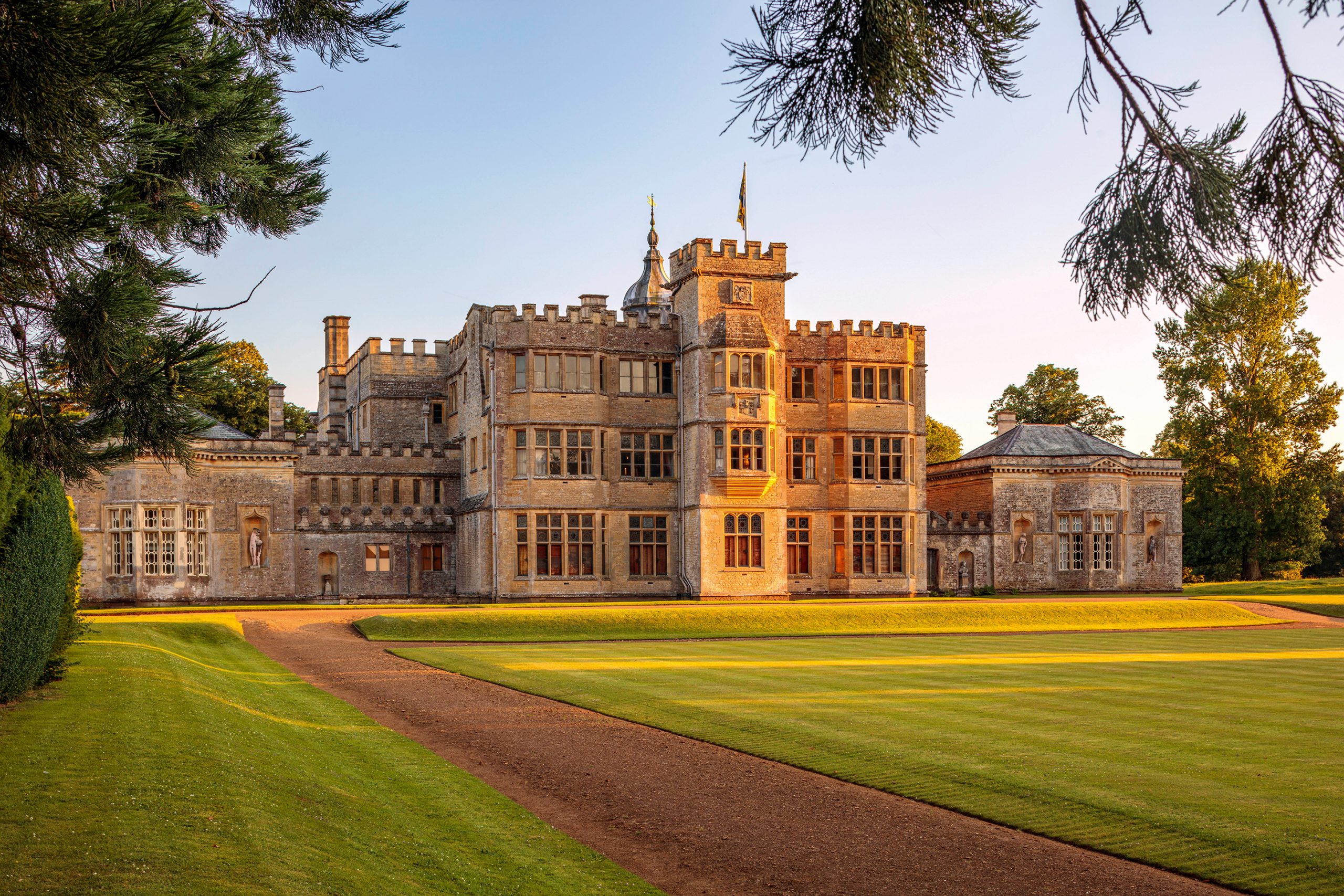
Whereas Antinous stands nonchalant and self-absorbed, the erotically modest Venus is oppressed by an evil, predatory Satyr, springing up from foliage on her left, but guarded by her hissing swans and the brooding goat god Pan, in his guise of rural protector, to her right. Here again we have the binary nature of the place, reinforced by Kent’s original drawing for this part of the garden, which is filled with promenading couples.
Kent’s most original and topographically satisfying garden building, the Praeneste arcade, is a masterstroke of pictorial genius to be seen from the Long Walk and from which to look down across the serpentine curve of the river snaking below and out to the countryside beyond.
Fitted neatly into the curve of the hillside, it provides a viewing place with painted wooden benches for private meetings. MacClary’s account lists the ‘bustos’ that were once in the niches, which included Cleopatra, Shakespeare, a Bacchanal and Alexander, a range from lovers to celebrities with the Bacchanal to hint at passion.
In exciting contrast, in that dark wooded corner beyond Bridgeman’s concave theatre below the Bowling Green terrace, the yews close in and the Pyramid, sacred to the noble dead, comes into view. MacClary records that this was decorated with bas-reliefs of Julius Caesar and Calpurnia, another uxurious couple, and busts of Marcus Aurelius and Socrates, very much an Oxford man’s choice. Once, a wooden bridge here allowed visitors to cross to the Temple of the Mill and the Triumphal Arch in the fields, but modern visitors will make their way up the hillside through a gate to the flowery profusion of the Walled Garden and the pear and fig-trailed Dovecote.
Rousham House, Oxfordshire, is open to the public
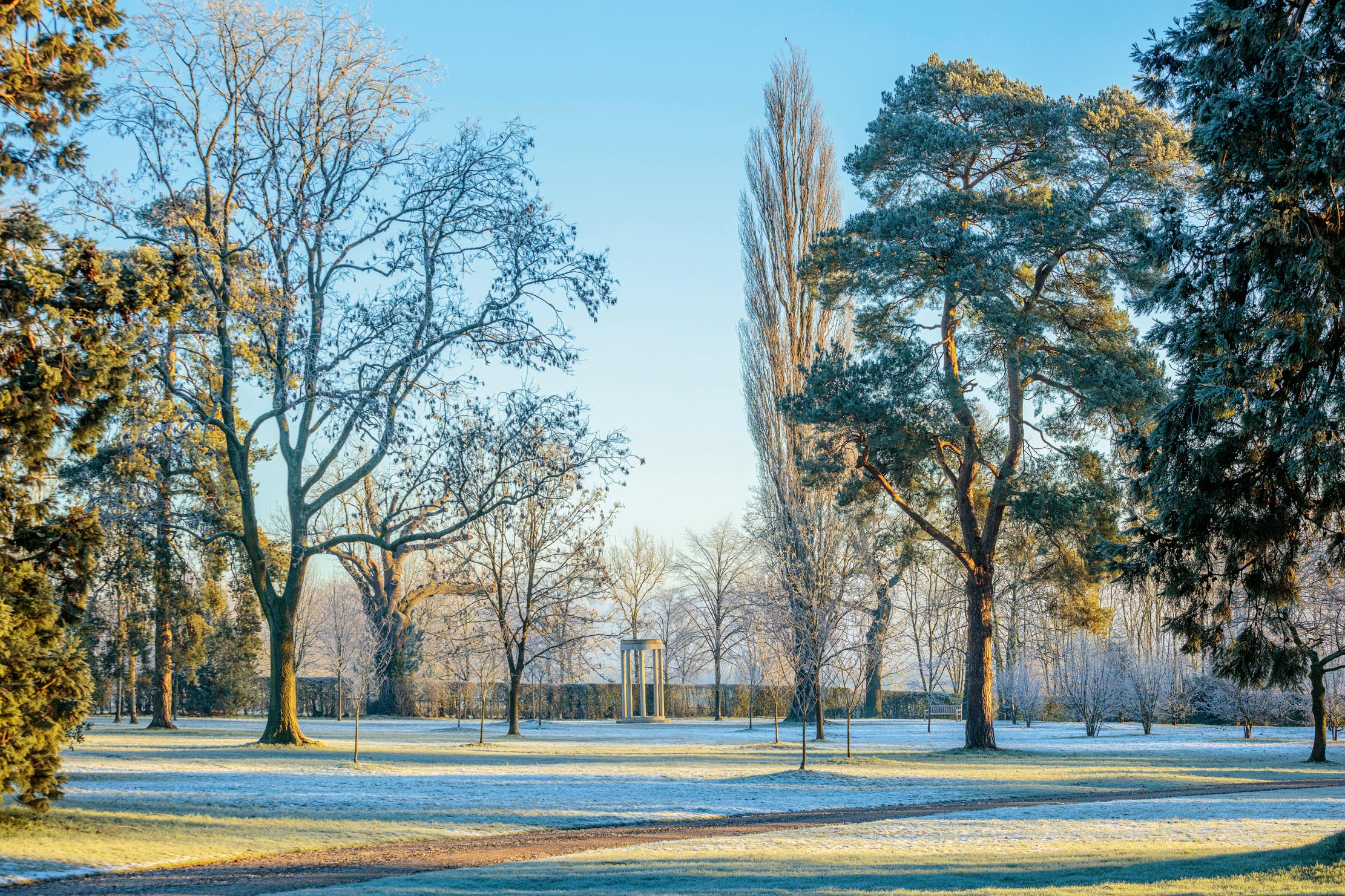
Morton Hall: The magnificent garden that gives an illusion of effortlessness amid the silent winter air
All looks peaceful at Morton Hall, Worcestershire, but key tasks will be tackled in winter to ensure that, come spring,
Country Life is unlike any other magazine: the only glossy weekly on the newsstand and the only magazine that has been guest-edited by HRH The King not once, but twice. It is a celebration of modern rural life and all its diverse joys and pleasures — that was first published in Queen Victoria's Diamond Jubilee year. Our eclectic mixture of witty and informative content — from the most up-to-date property news and commentary and a coveted glimpse inside some of the UK's best houses and gardens, to gardening, the arts and interior design, written by experts in their field — still cannot be found in print or online, anywhere else.
-
 ‘It had the air of an ex-rental, and that’s putting it politely’: How an antique dealer transformed a run-down Georgian house in Chatham Dockyards
‘It had the air of an ex-rental, and that’s putting it politely’: How an antique dealer transformed a run-down Georgian house in Chatham DockyardsAn antique dealer with an eye for colour has rescued an 18th-century house from years of neglect with the help of the team at Mylands.
By Arabella Youens
-
 You're having a giraffe: Country Life Quiz of the Day, April 25, 2025
You're having a giraffe: Country Life Quiz of the Day, April 25, 2025Friday's Quiz of the Day brings your opera, marathons and a Spanish landmark.
By Toby Keel